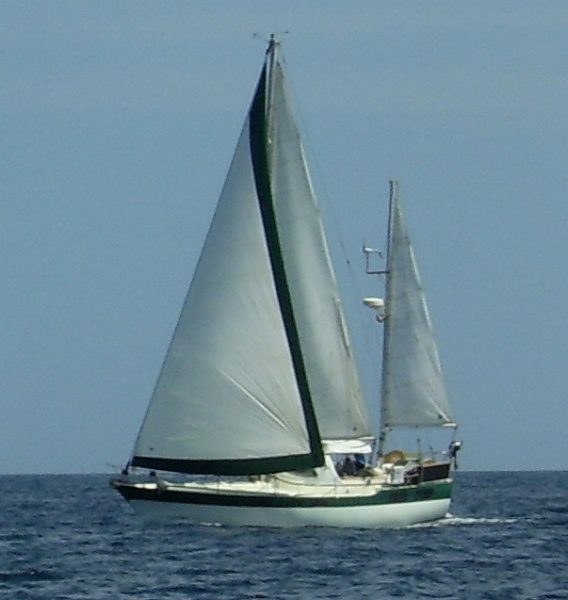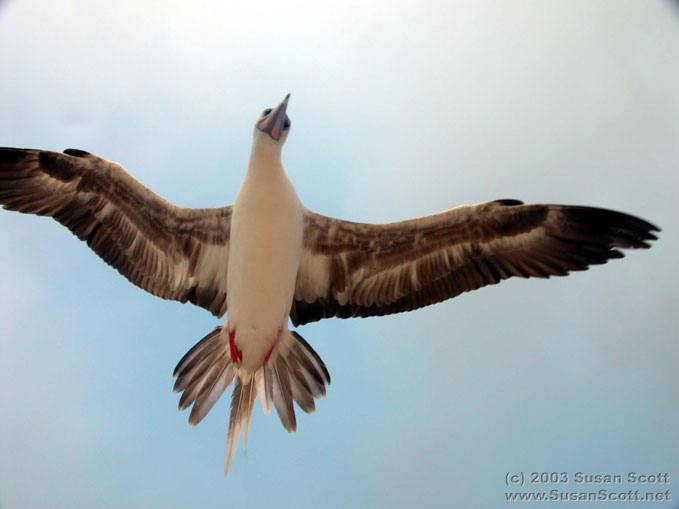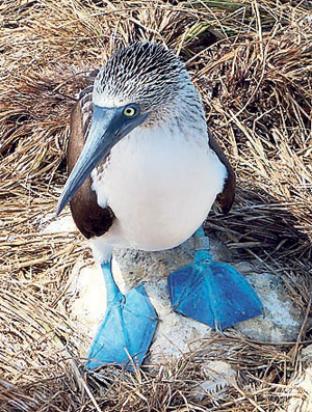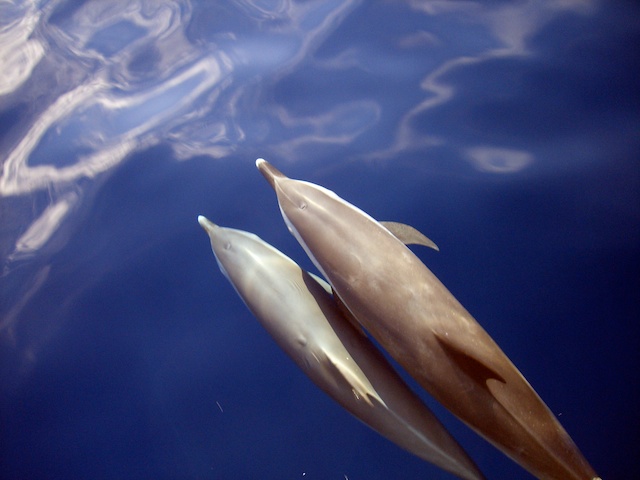Published in the Ocean Watch column, Honolulu Star-Advertiser © Susan Scott
April 8, 2013
Latitude 17N, longitude 109W » Five days ago two friends, Alex and John, and I set sail on my boat, Honu, from Puerto Vallarta, Mexico. We are heading for Nuku Hiva, an island in the Marquesas group, about 3,000 miles away. Depending on wind strength and direction, Honu is making between 100 and 150 miles per day. At that rate, normal for a 37-foot sailboat, we will be at sea three to four weeks.
 Sailing Vessel Honu
Sailing Vessel Honu
I’d been preparing Honu for this trip for the past month, and as we left the bay I had a daunting thought: Now comes the test of how well I did — and of whether I can manage this boat. Our safe passage depends on me.
As usual, just when I’m having doubts, a bunch of marine animals remind me of why I’m here. This time, so many species showed up to bid me farewell I forgot to be nervous about leaving land.
First came the seabirds. While motoring out of Banderas Bay in flat, calm water, we spotted what Hawaii anglers call a bird pile, thousands of seabirds circling, swooping and diving over patches of swirling water.
We watched brown- and blue-footed boobies plunge-dive next to brown pelicans, as royal and elegant terns, the seabird version of hummingbirds, hovered near the surface to pluck their prizes from the sea.

 Brown & Blue-footed Boobies.
Brown & Blue-footed Boobies.
©2013 Susan Scott
Heermann’s gulls joined in gleefully, and one frigate bird came rushing to the melee. Both gulls and frigates are able to catch fish at the surface, but the species are also expert at stealing fish from the beaks of the diving birds. In the free-for-all I’m sure robbery occurred.
As Honu glided into the commotion, we saw the drivers of it all: yellowfin tunas, or ahi, chasing schools of small silvery fish to the surface. The water was so clear that I had a magnificent sight, a first for me: I could plainly see the big tunas’ muscular bodies powering through the water as if flying, with bright yellow fins trailing like wings.
I felt sorry for the small silver fish that zigged and zagged around the boat. If they escaped the tunas, they got nailed by a bird.
Or a dolphin. A pod of bottlenose dolphins showed up, too, numbering in the hundreds. Some rode Honu’s bow wave while others leaped alongside. Behind the dolphins, a humpback whale showed its fluke. Alex explained to John, his dad, it meant the whale was diving. I preferred to think it was waving goodbye.
Farther offshore, turtles began to show up, floating so relaxed that they didn’t stir when brown booby birds stood on their backs. We knew they were olive ridley turtles, because their shells are distinctly curved and deeply olive. While floating they look like World War II Army helmets.
The farther we sailed, the fewer animals we saw because, like us, marine animals prefer reefs, continental shelves and islands. Now, five days out, we see the occasional shearwater or petrel, but mostly we are alone.
And we feel it, three boobies standing on our own floating turtle, Honu. Out here the expression “the middle of nowhere” has never seemed more apt — and I’ve never felt more proud, happy and lucky to be there.
